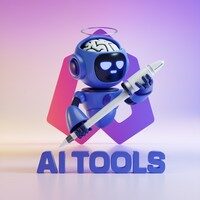In today’s fast-paced business environment, accurate demand forecasting is critical for companies seeking to enhance operational efficiency, reduce waste, and ultimately boost profitability. Leveraging Artificial Intelligence (AI) tools can significantly improve the precision of demand predictions. This article delves into the top AI tools for accurate demand forecasting, highlighting their features and benefits, and equipping businesses with the knowledge to make informed decisions.
The Importance of Demand Forecasting
Effective demand forecasting is more than just predicting future sales; it’s about understanding market trends, consumer behavior, and external factors affecting demand. Poor forecasting can lead to stockouts, overstocks, and wasted resources. With the advent of AI, businesses can now use sophisticated algorithms to analyze vast datasets and generate real-time insights.
How AI Transforms Demand Forecasting
AI’s capability to process and analyze large amounts of data can revolutionize how businesses forecast demand. Through techniques like machine learning, AI systems can identify patterns and correlations in data that traditional methods might overlook. This leads to more precise forecasts and better inventory management.
Key Features of Effective Demand Forecasting Tools
When evaluating AI-driven demand forecasting tools, several key features should be considered:
Data Integration: The ability to integrate data from various sources, such as sales history, market trends, and external variables, is crucial. The more comprehensive the data, the more accurate the forecasts.
User-Friendly Interface: A straightforward and intuitive interface enhances user experience, enabling teams to leverage the tool without extensive training.
Scalability: As businesses grow, their needs change. Scalable tools can adapt to increasing volumes of data and complexity.
Real-Time Analytics: AI tools should provide real-time insights to quickly adapt to market fluctuations and consumer demands.
- Predictive Analytics: Utilizing historical data and machine learning algorithms allows for the prediction of future demand with respect to various scenarios.
Top AI Tools for Demand Forecasting
1. Forecast Pro
Forecast Pro is an industry leader in demand forecasting. It employs advanced algorithms to offer scalable solutions suitable for businesses of all sizes. Its flexible interface allows users to adjust parameters easily and generate forecasts based on various criteria. The tool also supports collaboration among various departments, streamlining the decision-making process.
2. Oracle Demand Management Cloud
Oracle offers a comprehensive suite through its Demand Management Cloud, which is particularly valuable for large enterprises. It combines AI-driven forecasts with machine learning capabilities, allowing businesses to create more nuanced forecasts that account for numerous influencing factors. This platform is designed for seamless integration with existing Oracle enterprise applications.
3. SAP Integrated Business Planning
SAP’s Integrated Business Planning provides a holistic view of the supply and demand landscape. The tool uses intelligent algorithms to predict demand across various channels, which helps businesses in adjusting their supply chain strategies accordingly. Its collaborative planning feature encourages teamwork across departments, resulting in more accurate outcomes.
4. Microsoft Azure Machine Learning
Microsoft Azure Machine Learning stands out due to its adaptability and customization options. Businesses can harness the power of Azure to build custom machine learning models tailored to their specific needs. Coupled with its seamless integration with other Microsoft products, it’s an optimal choice for companies already using the Microsoft ecosystem.
5. IBM Watson Studio
IBM Watson Studio merges AI with predictive analytics to provide powerful forecasting tools. Users can access pre-built models, or they can create their own using a wide array of algorithms. Watson Studio’s ability to work with diverse data formats enhances its adaptability across various industries.
6. Katanacuts
Katanacuts is a focused solution primarily designed for fashion and apparel companies. It helps brands manage inventory levels based on precise demand forecasts, thereby reducing excess stock and improving turnover rates. Katanacuts’ visual planning interface makes it particularly appealing to users.
7. FuturMaster
FuturMaster offers a robust solution for demand forecasting and supply chain optimization. With functionalities like demand sensing and statistical forecasting, it aids businesses in making better strategic decisions based on data-driven insights. The tool is particularly beneficial for sectors with intricate supply chains.
8. Llamasoft Supply Chain Guru
Llamasoft Supply Chain Guru uses AI and machine learning to analyze complex supply chain dynamics. Its demand forecasting module enables users to utilize historical data and market signals to improve their predictions. The visualizations offered help users comprehend the impact of various factors on demand effectively.
9. NetSuite by Oracle
NetSuite provides a cloud-based ERP solution that includes powerful demand planning features. It leverages AI to assess patterns in sales and market trends, ultimately helping businesses to optimize inventory management and enhance their forecasting accuracy.
10. Demand Works Smoothie
Demand Works Smoothie employs advanced statistical forecasting techniques, enabling users to predict demand more accurately. Its user-friendly interface and collaborative tools enhance teamwork within organizations, making it a favorable choice for demand planning.
Best Practices for Implementing AI Demand Forecasting Tools
Implementing AI demand forecasting tools requires strategic planning to maximize benefits. Here are several best practices:
Start with Quality Data: The effectiveness of AI tools hinges on data. Ensure data is clean, well-organized, and comprehensive to enhance forecasting accuracy.
Involve Key Stakeholders: Engaging different departments helps capture diverse inputs that can enhance forecasting models. Ensure that marketing, sales, and supply chain teams collaborate closely.
Continuous Monitoring and Adjustments: Demand forecasting is not static. Regularly monitor forecasts and update models to reflect changing market conditions.
Invest in Training: Equip your team with the necessary training to understand and leverage these tools effectively. Proper use can significantly enhance forecasting accuracy.
- Leverage Multiple Tools: Depending on the specific needs of your business, consider using multiple tools in tandem for enhanced insights and capabilities.
The Future of Demand Forecasting
As technology advances, the landscape of demand forecasting will continue to evolve. AI-driven tools are expected to become more sophisticated, further integrating real-time data and predictive analytics. Technologies like blockchain and IoT (Internet of Things) will likely play pivotal roles in making demand forecasting even more accurate.
Conclusion: Making the Right Choice
Selecting the right AI tool for demand forecasting can significantly influence a company’s operational efficiency and bottom line. With numerous options available, businesses must assess their unique needs, data capabilities, and potential growth trajectory. Incorporating these AI tools into their forecasting processes can empower businesses to anticipate consumer demand effectively, reduce costs, and optimize supply chain management—a necessity to thrive in today’s competitive landscape. Investing in the right tools is not merely a choice; it’s a strategic advantage for businesses aiming for sustained success in an unpredictable market.








